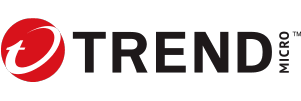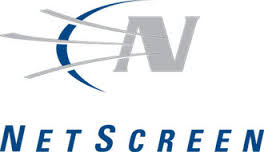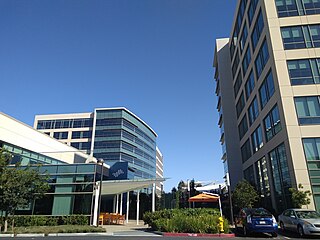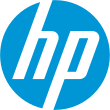Related Research Articles

3Com Corporation was an American digital electronics manufacturer best known for its computer network products. The company was co-founded in 1979 by Robert Metcalfe, Howard Charney and others. Bill Krause joined as President in 1981. Metcalfe explained the name 3Com was a contraction of "Computer Communication Compatibility", with its focus on Ethernet technology that he had co-invented, which enabled the networking of computers.
An intrusion detection system is a device or software application that monitors a network or systems for malicious activity or policy violations. Any intrusion activity or violation is typically either reported to an administrator or collected centrally using a security information and event management (SIEM) system. A SIEM system combines outputs from multiple sources and uses alarm filtering techniques to distinguish malicious activity from false alarms.
Internet Security Systems, Inc., often known simply as ISS or ISSX, was a provider of security software and managed security services. It provided software and services for computers, servers, networks, and remote locations that involve preemptive security against threats before they affect a business. Founded in 1994, the company was acquired by IBM in 2006.

McAfee Corp., formerly known as McAfee Associates, Inc. from 1987 to 1997 and 2004 to 2014, Network Associates Inc. from 1997 to 2004, and Intel Security Group from 2014 to 2017, is an American global computer security software company headquartered in San Jose, California.

Trend Micro Inc. is a Japanese cyber security software company. The company has globally dispersed R&D in 16 locations across every continent excluding Antarctica. The company develops enterprise security software for servers, containers, & cloud computing environments, networks, and end points. Its cloud and virtualization security products provide automated security for customers of VMware, Amazon AWS, Microsoft Azure, and Google Cloud Platform.
Fortinet is a cybersecurity company with headquarters in Sunnyvale, California. The company develops and sells security solutions like firewalls, endpoint security and intrusion detection systems. Fortinet has offices located all over the world.

Check Point is an American-Israeli multinational provider of software and combined hardware and software products for IT security, including network security, endpoint security, cloud security, mobile security, data security and security management.
Barracuda Networks, Inc. is a company providing security, networking and storage products based on network appliances and cloud services. The company's security products include products for protection against email, web surfing, web hackers and instant messaging threats such as spam, spyware, trojans, and viruses. The company's networking and storage products include web filtering, load balancing, application delivery controllers, message archiving, NG firewalls, backup services and data protection.
Check Point Integrity is an endpoint security software product developed by Check Point Software Technologies. It is designed to protect personal computers and the networks they connect to from computer worms, Trojan horses, spyware, and intrusion attempts by hackers. The software aims to stop new PC threats and attacks before signature updates have been installed on the PC. The software includes.

Sourcefire, Inc was a technology company that developed network security hardware and software. The company's Firepower network security appliances were based on Snort, an open-source intrusion detection system (IDS). Sourcefire was acquired by Cisco for $2.7 billion in July 2013.
A virtual security appliance is a computer appliance that runs inside virtual environments. It is called an appliance because it is pre-packaged with a hardened operating system and a security application and runs on a virtualized hardware. The hardware is virtualized using hypervisor technology delivered by companies such as VMware, Citrix and Microsoft. The security application may vary depending on the particular network security vendor. Some vendors such as Reflex Systems have chosen to deliver Intrusion Prevention technology as a Virtualized Appliance, or as a multifunctional server vulnerability shield delivered by Blue Lane. The type of security technology is irrelevant when it comes to the definition of a Virtual Security Appliance and is more relevant when it comes to the performance levels achieved when deploying various types of security as a virtual security appliance. Other issues include visibility into the hypervisor and the virtual network that runs inside.
A bypass switch (or bypass TAP) is a hardware device that provides a fail-safe access port for an in-line active security appliance such as an intrusion prevention system (IPS), next generation firewall (NGFW), etc. Active, in-line security appliances are single points of failure in live computer networks because if the appliance loses power, experiences a software failure, or is taken off-line for updates or upgrades, traffic can no longer flow through the critical link. The bypass switch or bypass tap removes this point of failure by automatically 'switching traffic via bypass mode' to keep the critical network link up.
TriGeo Network Security is a United States–based provider of security information and event management (SIEM) technology. The company helps midmarket organizations proactively, protects networks and data from internal and external threats, with a SIEM appliance that provides real-time log management and automated network defense - from the perimeter to the endpoint.

NetScreen Technologies was an American technology company that was acquired by Juniper Networks for US$4 billion stock for stock in 2004.
In computing, a firewall is a network security system that monitors and controls incoming and outgoing network traffic based on predetermined security rules. A firewall typically establishes a barrier between a trusted network and an untrusted network, such as the Internet.
Stonesoft Corporation was a public company that developed and sold network security solutions based in Helsinki, Finland. It was publicly owned until 2013 when it was acquired by Intel's subsidiary McAfee.
Hewlett Packard Enterprise Networking is the networking products division of Hewlett Packard Enterprise (HPE). HPE Networking and its predecessor entities have a long history of developing and selling networking products. Today, it offers campus and small business networking products through its wholly owned company Aruba Networks which was acquired in 2015. Prior to this, HP Networking was the entity within HP offering networking products.
The Micro Focus Enterprise Security Products business is part of the software business of Micro Focus. HP Enterprise Security Products was built from acquired companies Fortify Software, ArcSight, and TippingPoint and Atalla, which HP bought in 2010 and 2011. HPE has since sold TippingPoint and has announced the intention to divest the entire HP Enterprise Software business unit by spinning it out and merging it with Micro Focus. The merge concluded on September 1, 2017.

Palo Alto Networks, Inc. is an American multinational cybersecurity company with headquarters in Santa Clara, California. The core product is a platform that includes advanced firewalls and cloud-based offerings that extend those firewalls to cover other aspects of security. The company serves over 70,000 organizations in over 150 countries, including 85 of the Fortune 100. It is home to the Unit 42 threat research team and hosts the Ignite cybersecurity conference. It is a partner organization of the World Economic Forum.
Unified threat management (UTM) is an approach to information security where a single hardware or software installation provides multiple security functions. This contrasts with the traditional method of having point solutions for each security function. UTM simplifies information-security management by providing a single management and reporting point for the security administrator rather than managing multiple products from different vendors. UTM appliances have been gaining popularity since 2009, partly because the all-in-one approach simplifies installation, configuration and maintenance. Such a setup saves time, money and people when compared to the management of multiple security systems. Instead of having several single-function appliances, all needing individual familiarity, attention and support, network administrators can centrally administer their security defenses from one computer. Some of the prominent UTM brands are Cisco, Fortinet, Sophos, Netgear, Huawei, Wi-Jungle, SonicWall and Check Point. UTMs are now typically called next-generation firewalls.
References
- ↑ Netpliance (March 16, 2000). "Prospectus". Form S-1/A. US Securities and Exchange Commission. Retrieved October 28, 2013.
- ↑ "TippingPoint posts $6.4M loss". www.bizjournals.com. Retrieved 2023-04-10.
- ↑ "Netpliance to pay $100,000 fine over computer ads". San Francisco Chronicle . Bloomberg Business News. 2001-07-01. Retrieved 2020-11-06.
- ↑ "Netpliance Settles FTC Charges:". Federal Trade Commission. 2001-07-02. Retrieved 2023-10-20.
- ↑ "Netpliance tries new tack to save business". CNET . 2002-01-11.
- ↑ Leyden, John. "3Com buys TippingPoint". www.theregister.com. Retrieved 2023-11-24.
- ↑ HP to Acquire 3Com for $2.7 Billion. Archived 2009-11-20 at the Wayback Machine
- ↑ Kuranda, Sarah (2015-10-21). "Trend Micro acquires HP TippingPoint for 300m". CRN. Retrieved 2016-09-13.
- ↑ "HP launches Tipping Point firewall with next-generation app control". Archived from the original on 2017-11-21. Retrieved 2023-11-30.
- Notes
- Fried, Ian (November 10, 2000). "Netpliance quits Web appliance business, slashes jobs". CNET News.com. Retrieved 2007-07-02.
- Trend Micro To Acquire HP TippingPoint For $300M. hp.com
